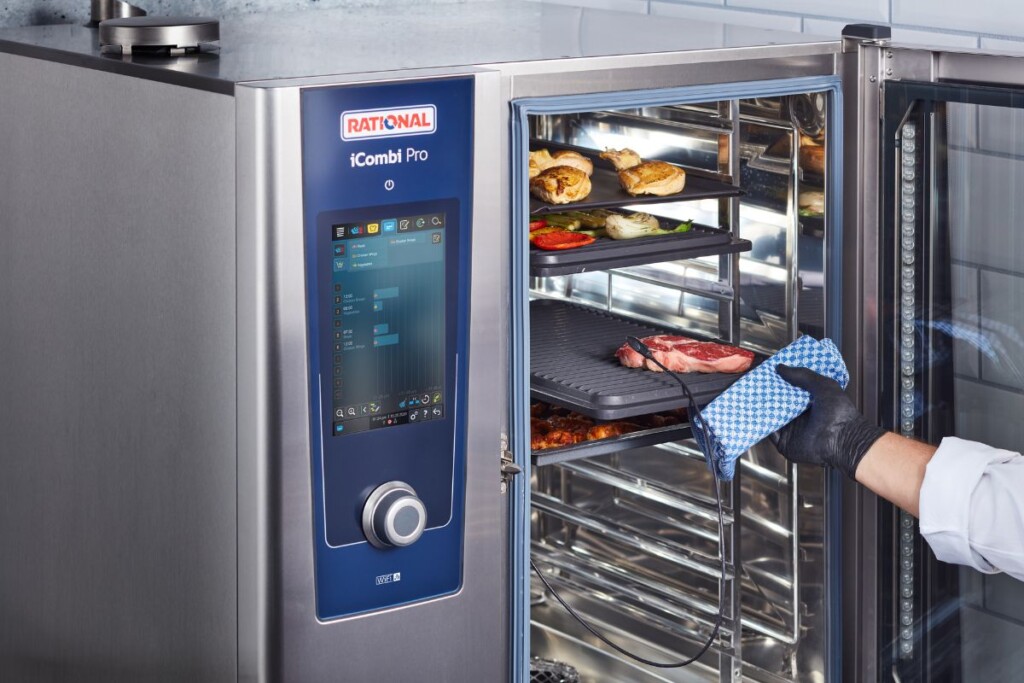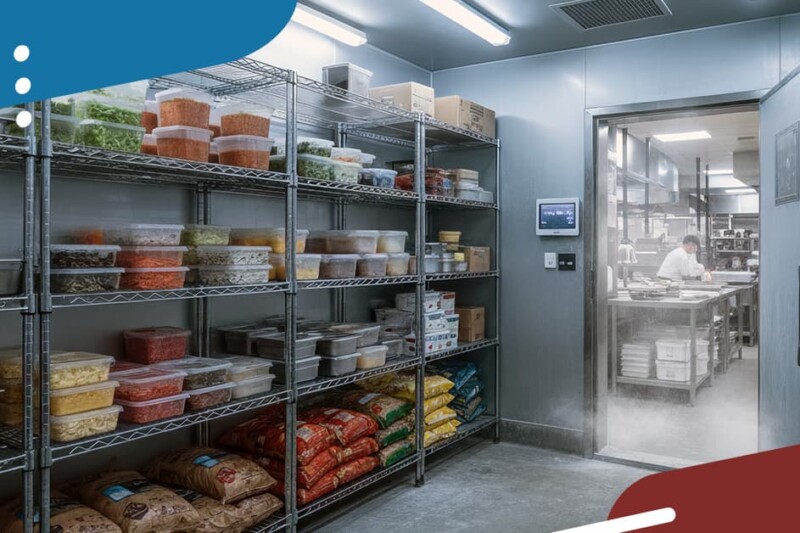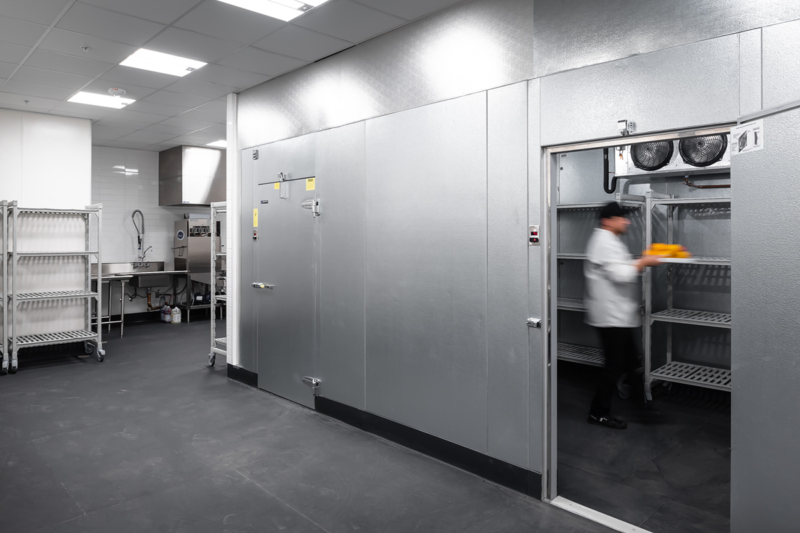SPONSORED CONTENT
Consultants Share Insights on Space-Saving Solutions
Joe Schumaker, FoodSpace, and Anja Kuechenmeister, Camacho, weigh in on how next-gen equipment and creative use of space can help operators meet challenges.

“Do more with less” is the familiar, if annoyingly unrelenting, post-pandemic refrain for foodservice operators across the U.S.
As surging rents, continued labor pressures and still-high demand for off-premise dining have kept the heat on operations of all sizes and service styles, owners and operators are homing in on smarter, more-efficient kitchen design as a way to help address all of these challenges. At the heart of “do more with less” design in the back of the house is next-generation multifunctional equipment, now with more-intuitive user interfaces and connected capabilities to let operators digitally manage menus without missing a beat.
The combination of the unprecedented flexibility of today’s multifunctional food-prep equipment with the easy-to-follow digital instructions (even available in multiple languages and with visual aids) that these kitchen workhorses offer users means that operators can rethink how and when items are prepared.
“How and when we do batch cooking and how we do hot holding has a big play in this,” says Joe Schumaker, a chef by training and president and CEO of foodservice consultancy firm FoodSpace. “Using the combi oven as an example, if I can cook rice in 20% less time in a combi oven than I can in a traditional oven or stovetop, because rice hot-holds very well, I can make it a little bit earlier and then use the oven for something else. And I haven’t done any damage to the product.” He adds: “You’re working through, in a programmatic way, how your menu can work for you” within the context of the space you have.
Anja Kuechenmeister, vice president of business development at foodservice design and consulting firm Camacho, echoes Schumaker’s take. “Having that intelligent equipment that is easy to use is extremely helpful,” she says. Today’s smart combi ovens, in particular, Kuechenmeister says, “take up less square footage, and that is crucial in a kitchen where rent costs are high”—commercial real-estate prices were up 4.9% for the year ended in March, according to Green Street’s Commercial Property Price Index.
“Having that intelligent equipment that is easy to use is extremely helpful.” – Anja Kuechenmeister, Camacho
“Equipment where you can be frying burgers and making soup at the same time and that is flexible for your staff so you don’t have to be highly trained to use it helps alleviate those (do-more-with-less) stresses,” she says.
Today’s higher-efficiency equipment, too, can be a game-changer, adds Schumaker. “If I have a high-efficiency fryer that’s able to put out more pounds of product per hour than the lower-efficiency one, it may cost me a little bit more to purchase, but now I don’t need two anymore; I only need one,” he says. That equates to energy savings, space savings and overall first-cost savings.
Beyond the use of intelligent and more-efficient-by-design equipment, maximizing throughput in the face of space constraints comes down to getting creative with space utilization, Schumaker and Kuechenmeister say.
“Don’t forget about the vertical space,” urges Schumaker. Wall-mounted shelves, racks and hooks for equipment like cooking/baking utensils, cutting boards, lids and more can keep these essentials close at hand for staff without taking up valuable counter or cabinet space. Mobile equipment, too, can augment a kitchen’s storage space with the added benefit of use-it-where-you-need-it flexibility. Schumaker recommends using mobile racks for high-frequency dry-storage items.
Finally, caution Schumaker and Kuechenmeister, it’s wise for operators to recognize their own limitations when it comes to space optimization. Operators “come in with their own thoughts and beliefs” about how a kitchen should be designed based on their own previous experience, Kuechenmeister says. “Oftentimes customers will say (for example), ‘I know the layout of what goes underneath the hood,’” she says. But the value in working with a consultant who has worked in a variety of spaces and with a variety of equipment is in opening clients to space-use options they may not have considered—or even realized were possible.
“When a consultant designs (around) the menu, we really look at, ‘OK how can we make this more efficient?’” Kuechenmeister says. “That exhaust hood might have been 20 feet long previously, but if we use multifunctional equipment, we could make that space 10 feet long, saving on HVAC costs and equipment costs.”
And for time-pressed, labor-pressed, space-pressed operators, creative collaboration plus more-intelligent equipment just may be the equation that equals doing more with less stress.
RELATED CONTENT
- Advertisement -
- Advertisement -
- Advertisement -
- Advertisement -
TRENDING NOW
- Advertisement -
- Advertisement -


